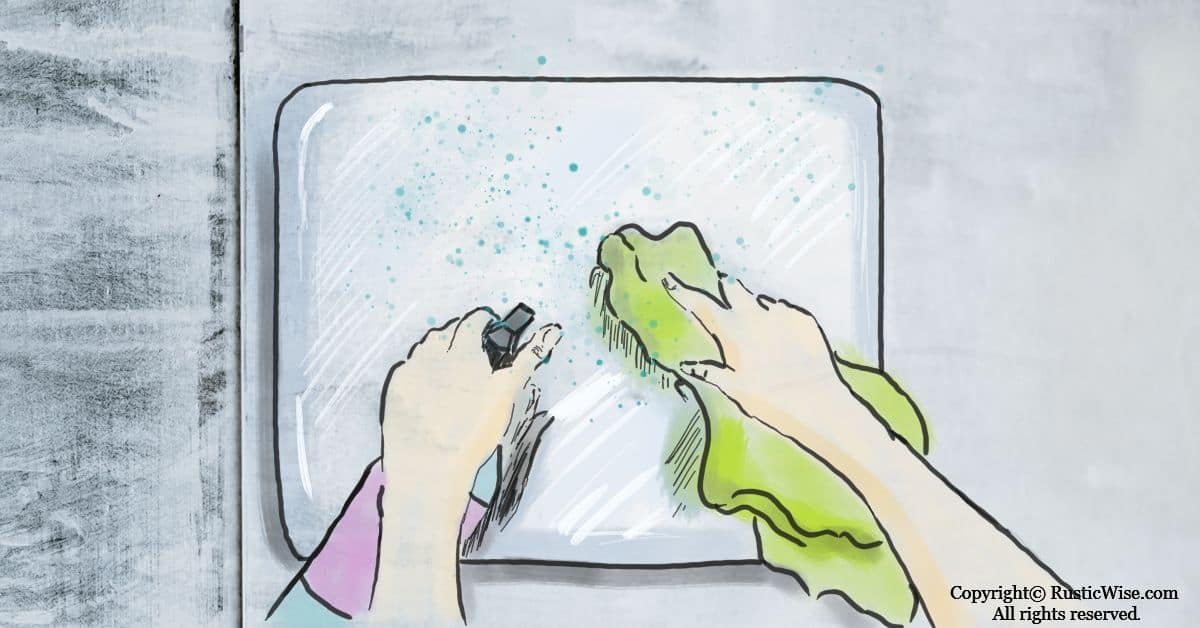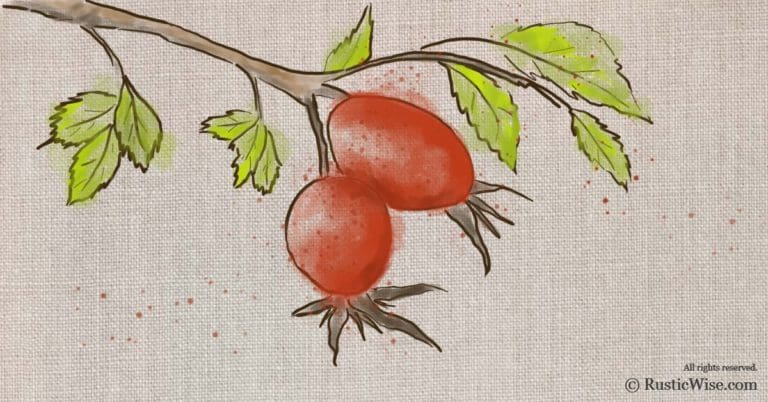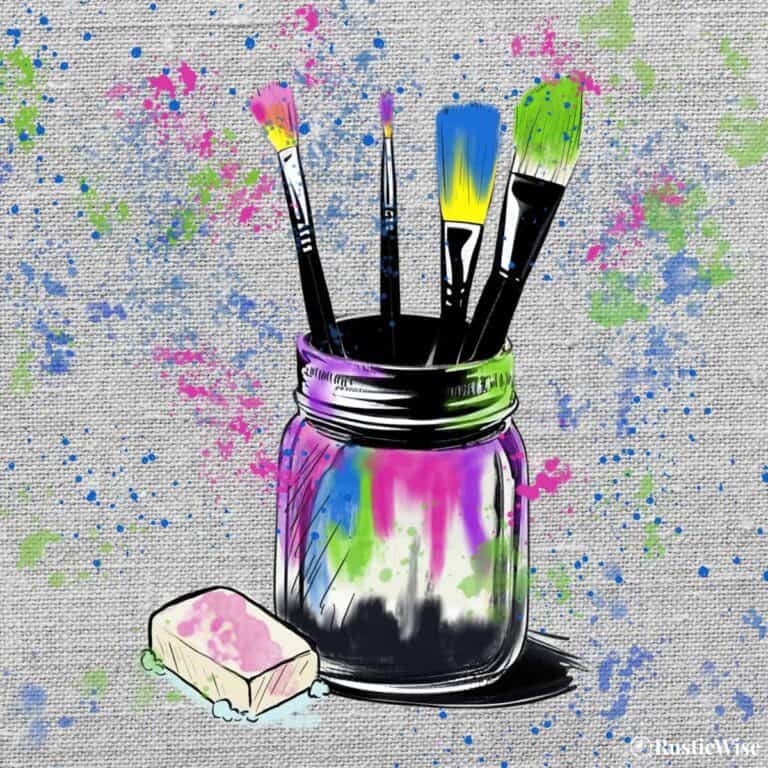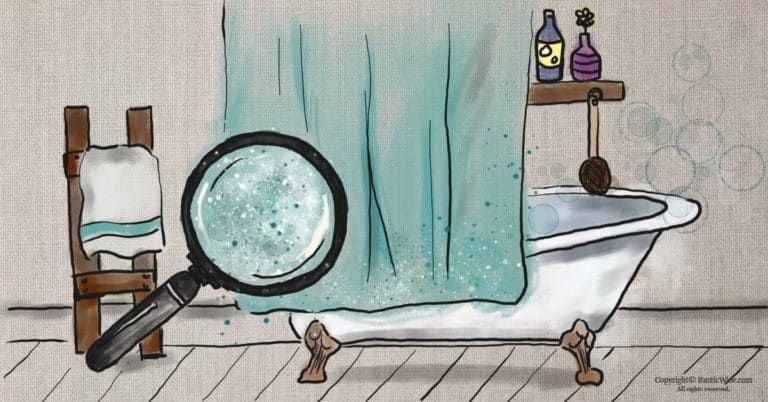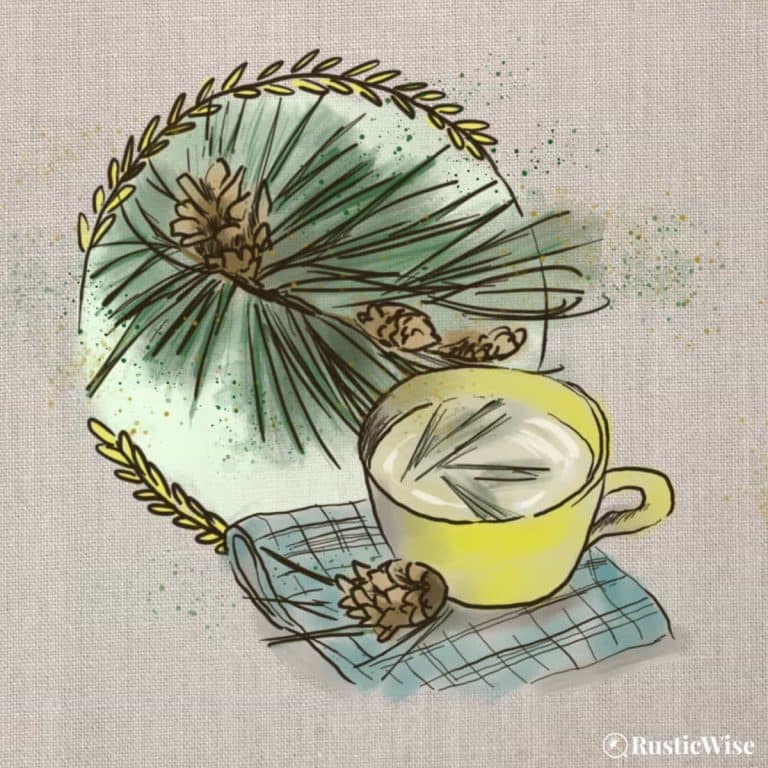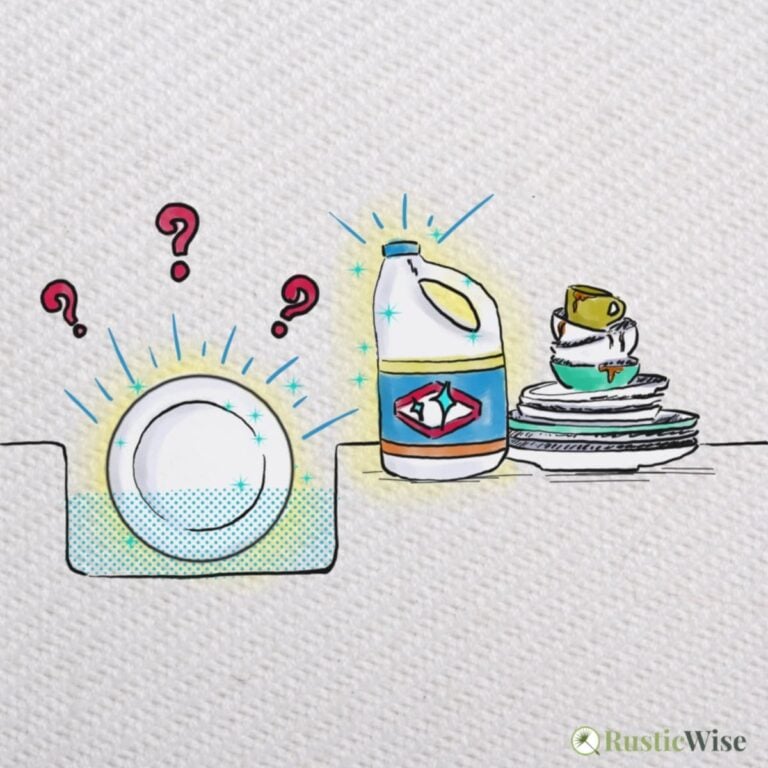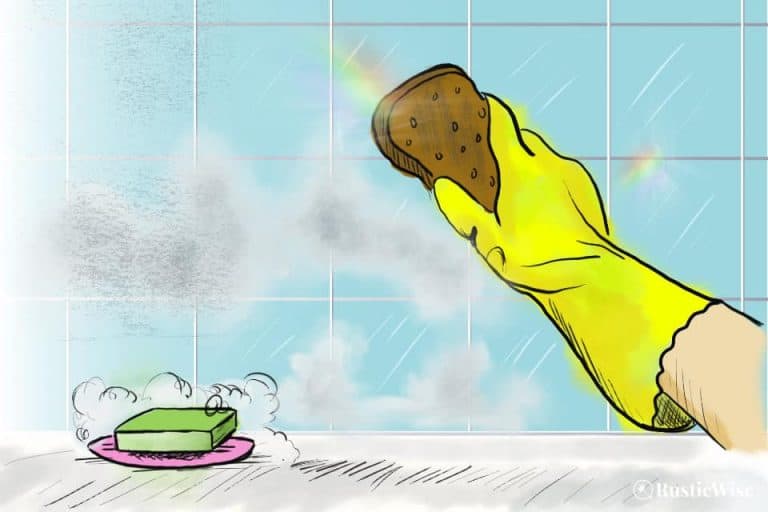9 Easy Ways to Clean a Mirror Without Windex
RusticWise is supported by its readers. When you purchase through links on our site, we may earn an affiliate commission. As an Amazon Associate, we earn from qualifying purchases. Thank You!
A dirty, streaky mirror is a cringe-worthy thing.
Whether you’re running low on glass cleaner, or simply looking for a way to reduce chemical use in your home, I’ll show you how to clean a mirror without Windex. Using simple ingredients you probably already have at home, you can make your own homemade cleaning solution to get sparkling clean glass and mirrors.
Plus, let’s take a look at the best cleaning supplies to use when mirror cleaning, along with a few tips on the best way to get a clean mirror without streaks!
Types of cleaning supplies for mirrors and windows
Not all cleaning materials are created equal. The type of cleaning tool you use when cleaning mirrors greatly determines whether you’re left with a streaky mess after all your hard work.
When choosing a cleaning material, ensure it is:
- Lint-free
- Non-abrasive (you don’t want to end up with a scratched surface, after all!)
Let’s look at a few common cleaning supplies and evaluate each one:
- Microfiber cleaning cloth: Great when used dry or damp, a microfiber towel is absorbent and lint-free. It’s a great household cleaning tool with a multitude of uses.
- Sponge: An all-around good choice. Just make sure you’re not using one with an abrasive surface that could scratch your mirror or glass. The downside? They’re not as absorbent as microfiber cloths and often leave excess water.
- Newspaper: An old-school tool used to clean windows (when every household used to get a paper newspaper delivered daily), newspapers still work.¹ Being lint-free, cheap, and surprisingly absorbent, it’s still a solid choice if you have old newspapers lying around. If you’re worried about ink streaks from the newspaper, it’s not much of a problem with today’s vegetable-based inks. Just be extra careful about potentially leaving ink stains around window trim.
- Squeegee: While professionals use squeegees to clean windows, it’s not a tool most people have at home for general mirror or window cleaning. While it works great, it takes some practice to get good results.
- Swedish dishcloth: Made of cellulose and cotton, a Swedish dishcloth is completely biodegradable and can be tossed into your backyard compost when it’s worn out. Simply dampen it, and use it to clean a glass surface. Plus, you don’t have to worry about it scratching or leaving lint when cleaning glass!
Tip: Microfiber cloths are a must-have, in my opinion, to get a clean, streak-free mirror. Not only are they useful when giving the mirror a quick, dry, rub-down before applying a cleaning solution, they’re also effective to use while damp.
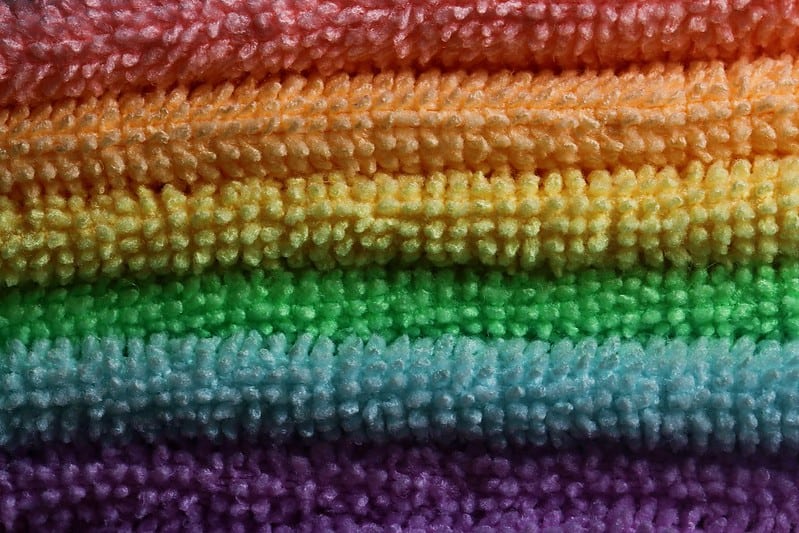
What should you NOT do with mirrors?
Avoid abrasive cleaning tools such as scouring pads, or plastic scrubbies which could scratch the surface.
And while paper towel is a commonly used household cleaning tool, its abrasive and unfortunately can scratch or pit the surface of mirrors and windows.
Also avoid using strong cleaners which may dull the smooth surface on windows and mirrors over time.
Mirror cleaning hacks: the secrets to streak-free mirrors
- Before you start spraying any type of cleaning solution on your mirrors, use a clean, dry microfiber cloth over the entire surface. This helps to remove any dust or debris, a main cause of streaking.
- Work in a z-shaped motion, or zigzag across the surface of the mirror or window. Avoid rubbing in circles.
- After you’ve applied your mirror cleaner, I again like to buff the mirror using a clean, dry microfiber cloth.
Doing these three things (no matter what kind of cleaning solution you use) helps to dramatically cut down on streaks.
Here’s another tip for getting a crystal clear mirror or window: use distilled water. Unlike regular tap water which contains trace minerals such as calcium and magnesium, which can leave spots or streaks, distilled water is purified and won’t leave behind residue.
How to clean a mirror without Windex 9 different ways
Ready to tackle some house cleaning? Move over Windex. Check out nine alternative ways to clean mirrors and windows withoutWindex (or other commercial glass cleaners).
#1: Vinegar solution
If you’re wondering how to clean mirrors naturally (and easily), this vinegar spray is my top go-to solution. It’s non-toxic and works like a charm.
Vinegar’s natural acidic properties make it a popular household cleaning and sanitizing item. The acetic acid in vinegar helps break down grime, scum, and dirt.
What you’ll need:
- White distilled vinegar
- Water
- Spray bottle
- Clean microfiber cloth
- Funnel
Mix one part vinegar to one part water.
Typically, one cup of water to one cup of vinegar is a good amount. Use a funnel to measure water and vinegar directly into your spray bottle. Swish gently to mix and voilà—your vinegar solution is ready to work its magic!
To use, spray liberally across the entire mirror, and wipe. No need to rinse.
Tip: If you have granite countertops anywhere near your mirror or window, be careful not to spray vinegar on it. Over time, vinegar’s acidity damages the surface of porous materials such as granite.
#2: Liquid dish soap
If the smell of vinegar bothers you, try using liquid dish soap. Dish detergent is something everyone has handy. To avoid streaks, don’t skimp on the final rinse!
You’ll need:
- A bucket or basin
- Warm water
- Liquid dish soap
- Microfiber cloth (or similar cleaning tool)
Be careful not to add too much dish soap, as this can cause streaking.
Find a medium-sized bucket and add one or two small squirts of liquid dish soap to the bottom. Fill a basin or bucket with about one gallon of warm water. The dish soap mixes nicely with the water as it’s getting filled up.
Gently swirl your cleaning cloth in the dish soap solution. Wring out excess water. Apply the cleaning solution over the entire surface, making sure not to get it too wet. Let it sit for 5 minutes. Wipe clean.
Follow up with a clean cloth using plain water to rinse off residue. Dry with a microfiber towel.
#3: Rubbing alcohol
Rubbing alcohol, or isopropyl alcohol, is a powerful cleaning agent used to disinfect and kill germs on a variety of surfaces.²
Since it contains a isopropyl alcohol concentration, rubbing alcohol will evaporate quickly and won’t leave streaks.
It’s also great for removing stuck-on toothpaste stains on bathroom mirrors. You can use it to spot clean as needed.
You’ll need:
- A cotton pad or cotton ball
- Rubbing alcohol
Apply a small amount of rubbing alcohol on a cotton pad or cotton ball. Target stuck-on stains on the mirror or glass. Follow with a cleaning solution as needed.
You can also make your own DIY alcohol spray by combining equal parts distilled water and rubbing alcohol in a spray bottle.
Tip: Rubbing alcohol is great to use for spot-cleaning bothersome toothpaste stains. Use it alone or together with your cleaning solution of choice.
#4: Plain water
The power of simple H₂0 is amazing. Using plain tap water works surprisingly well with a microfiber cloth if you have minor dust or light dirt buildup. You’ll obviously need something stronger if your mirror or window is grungy.
You’ll need:
- Spray bottle filled with water
- Microfiber cloth
Spray the mirror or window with water as needed. Wipe clean.
#5: Dryer sheet
I’m a big fan of reusing or repurposing household items. But, I’m not really a fan of commercial dryer sheets in general as they contain a lot of chemicals. However, this DIY solution calls for used dryer sheets, so if you have some lying around, this is a great way to use them again.
You’ll need:
- Used dryer sheet(s)
- Spray bottle filled with water
Dryer sheets have anti-static properties, so they’re great at collecting dust. If you have just a light layer of dust to clean, use a dry dryer sheet to wipe the surface quickly. Or, you can use dryer sheets in lieu of paper towels. For a more thorough clean, spray water as needed and wipe with a dryer cloth.
#6: Shaving cream
It doesn’t matter what brand you use, but shaving cream (not shaving gel), works wonders on your bathroom mirror. An added bonus is that it prevents the mirror from fogging up the next time you have a hot shower. Avoid rubbing the glass after you’ve applied shaving cream to protect the finish.
You’ll need:
- Shaving cream
- Microfiber cloth
Apply a bit of shaving cream onto the mirror. Wipe clean with a microfiber cloth.
#7: Toothpaste
Because toothpaste is a mild abrasive that often contains baking soda, it also doubles as a household cleaner. While regularly using toothpaste to clean mirrors and windows might not be the most cost-effective method, it works in a pinch if you’re out of other glass cleaners.
I would stick with a plain white toothpaste over a colored gel to avoid any potential staining on your clothes.
And just like shaving cream, toothpaste also works to defog mirrors.
You’ll need:
- A tube of toothpaste (the cheaper the better)
- A microfiber cloth
Squeeze a small amount of toothpaste to a cleaning cloth and apply evenly across your mirror surface. Allow it to dry (around 20 minutes). Wipe clean with a damp microfiber cloth.
Tip: Most other methods work better with a zigzag motion. But with toothpaste, small circles seem to work best.
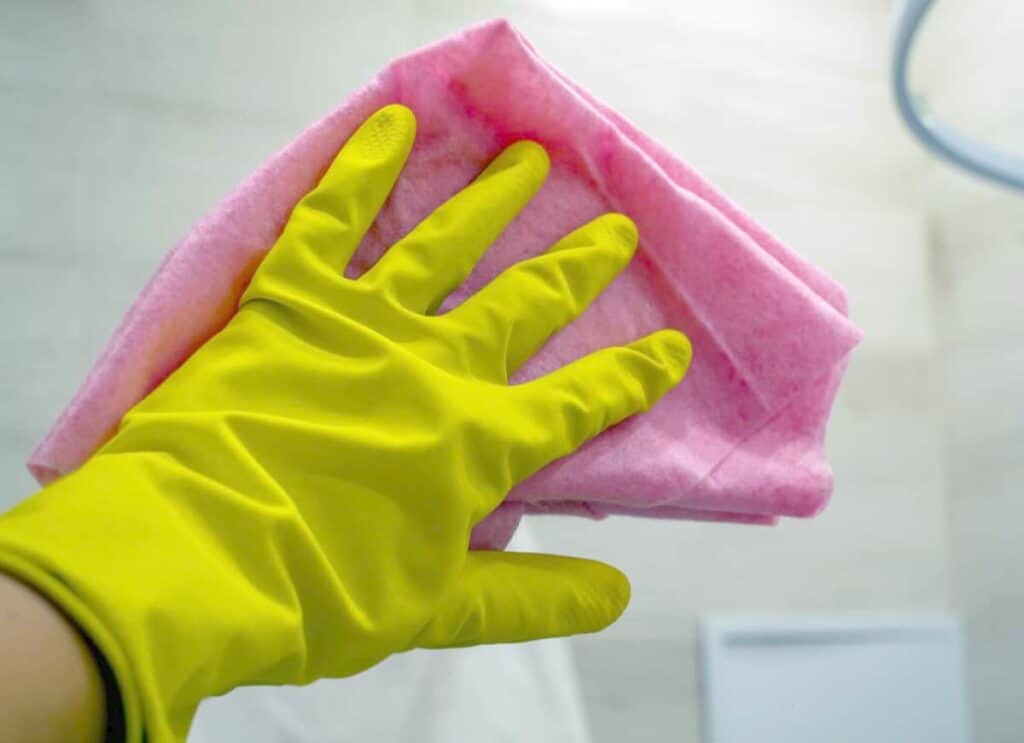
#8: Homemade DIY cleaner for mirrors and windows
I stumbled across a great DIY window cleaner from One Essential Community.³ The great thing is that this recipe calls for only four ingredients—all of which are natural and things you’ll have at home.
You’ll need:
- Spray bottle
- ½ cup white vinegar
- ½ cup rubbing alcohol OR cheap vodka
- 1 tablespoon cornstarch
- Optional: 10 drops of your favorite essential oil(s)—lavender, lemon, orange, or tea tree are good choices
- Funnel
Pour all the ingredients into an empty spray bottle using a funnel in the order listed above. Replace spray bottle top. Swirl gently to mix.
Adding a few drops of your favorite essential oils minimizes the smell of vinegar and is a great way to personalize your DIY cleaner.
#9: Disinfecting wipe
If you overstocked on disinfectant wipes and are wondering how to put them to good use, you might wonder, can you clean your mirror with Clorox® wipes?
Yes, you can use a Clorox® wipe to wipe down mirrors. Disinfectant wipes are designed for use on non-porous surfaces, and glass and mirrors are just that. The alcohol in the wipes will help ensure your mirror dries streak-free.
The Clorox website says, “Clorox® Disinfecting Wipes are easy to use and work on a variety of hard, nonporous surfaces, including mirrors and glass. The powerful cleaning technology dissolves kitchen grease and fights soap scum.”⁴
Related questions
How do you clean mirrors quickly?
If you want to clean a mirror lickety-split, I would suggest using a microfiber towel and a vinegar solution (equal parts white vinegar and water).
Combine your cleaning solution in a spray bottle and spray evenly across the mirror surface. Wipe side-to-side, and you’re done!
Why is your mirror cloudy after cleaning?
A cloudy mirror is often the result of soapy residue, or a film left behind from other types of cleaning products. Use a vinegar solution to cut through the buildup and wipe clean with a clean cloth.
Can you clean eyeglasses with Windex?
No, it’s not recommended to use Windex to clean your eyeglasses, as it contains ammonia which can damage the protective coating on the lenses over time. Plus, you don’t want harsh chemicals anywhere near your eyes!Check out our article on keeping your eyeglasses clean + DIY cleaning spray.
👉 If you like this post, see other Timeless Cleaning Tips You Need To Know. 🌟
Would you like more timeless tips via email?
Fun tips to help you live an independent, self-sustaining lifestyle. Opt-out at any time.


References
- How Stuff Works, “Was Mom Right? Can you use newspaper to clean glass?” https://home.howstuffworks.com/home-improvement/household-hints-tips/cleaning-organizing/can-you-use-newspaper-to-clean-glass.htm. Accessed April 2023.
- Vandergriendt, Carly (20 August 2020). “Rubbing Alcohol vs. Hydrogen Peroxide for Killing Germs,” Healthline. Accessed April 2023.
- Lewis, Sarah (17 February 2017). “The Best DIY Streak-Free Window & Mirror Glass Cleaner.” One Essential Community. Accessed April 2023.
- Clorox, How to Clean Mirrors and Faucets With Wipes, https://www.clorox.com/learn/how-to-clean-mirrors-and-faucets-with-wipes/. Accessed April 2023.

Author: Theresa Tesolin
Theresa is co-founder of RusticWise. She helps people unleash their inner DIY spirit by encouraging them to get dirty and make or grow something from scratch.

